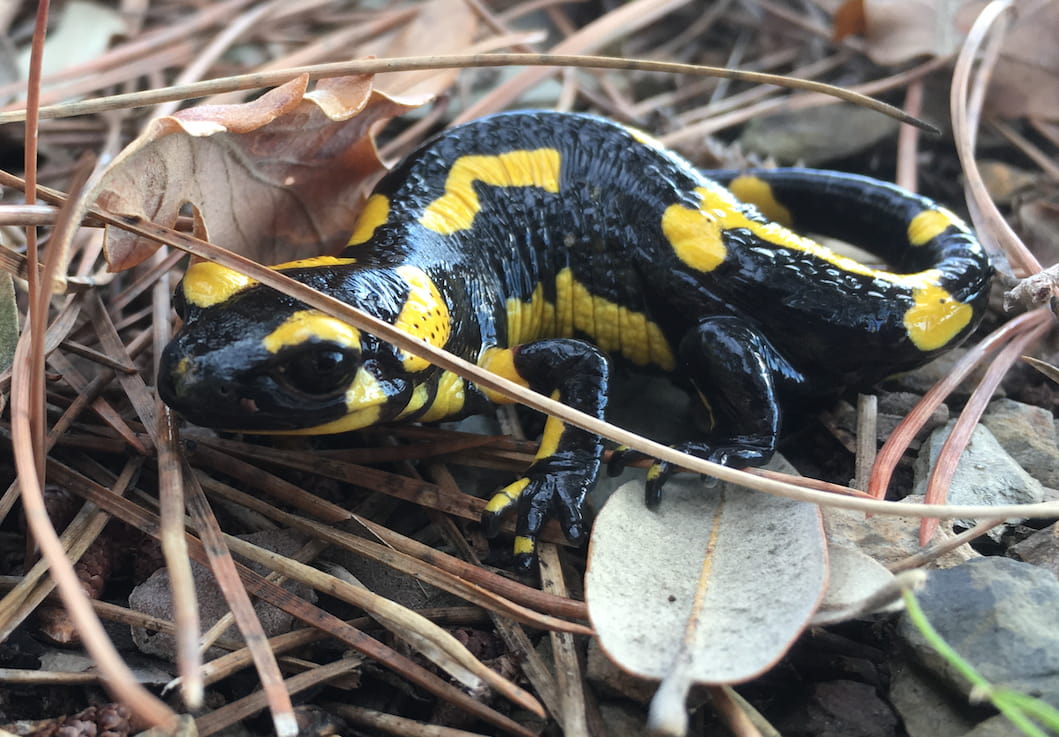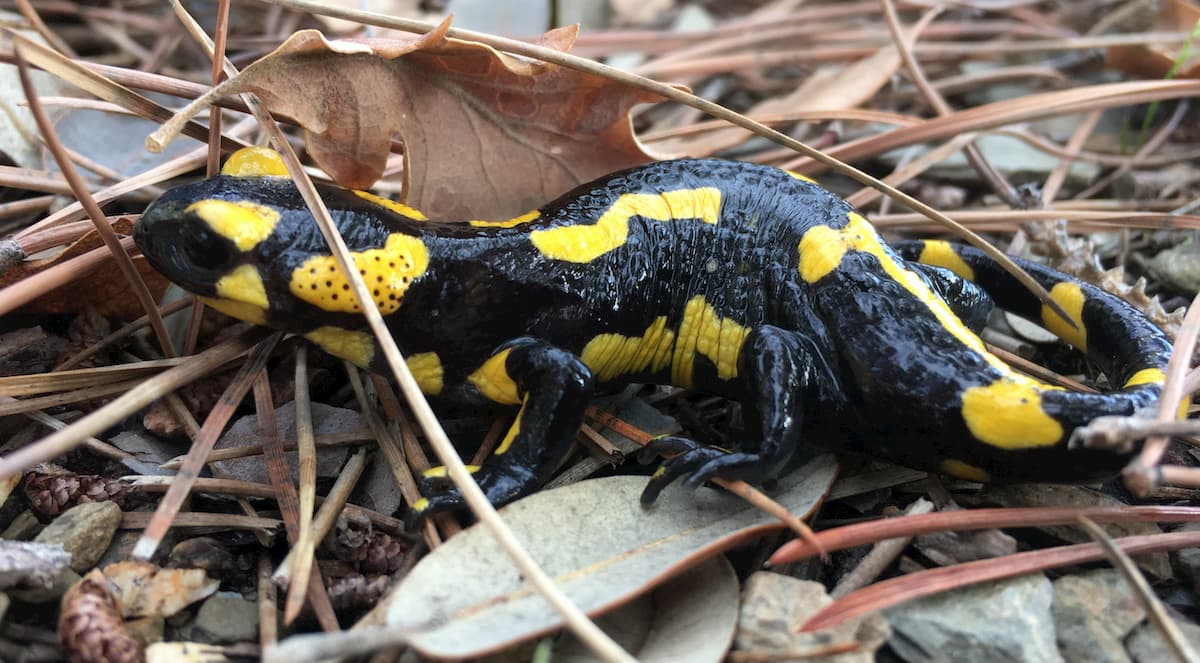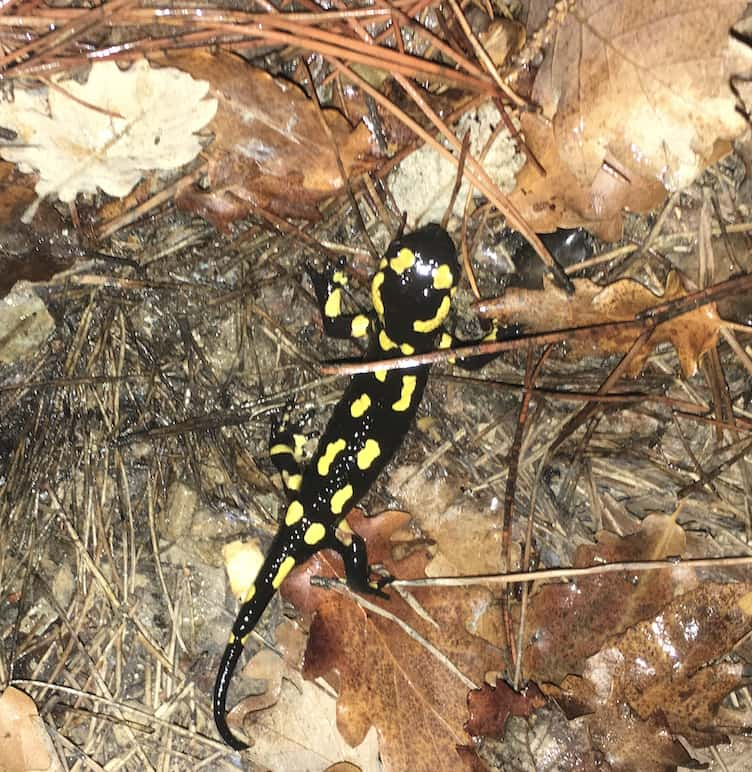Salamander in the forest

Salamander among the litter.
The salamander (Salamandra salamandra), is a beautiful amphibian that can reach 25cm in length (including the tail). They inhabit wooded areas where they can find shelter during the day (they take refuge from the daytime dryness hidden among the litter, logs and stones) and some nearby clean water stream, where they can carry out the laying of the eggs. The larvae have gills and tail fins, to carry out a full aquatic life during the 6 months that the larval period can last. In other parts of the Iberian peninsula, there are viviparous subspecies that give birth to their young directly on land, fully developed as adults. Their diet is made up of small invertebrates such as insects, worms, spiders, slugs, etc.

Striking and unmistakable coloring.
Its characteristic black and yellow coloration, this vivid coloration (aposematic coloration) is destined to alert possible predators that its skin and glands are toxic. This trait also occurs in animals as diverse as wasps or scorpion fish, among many others.

Salamander in rainy day.
Tags: salamandra, montserrat, olesa de montserrat, puigventosmontserratnatural.com @Copyright 2020
Privacy Config